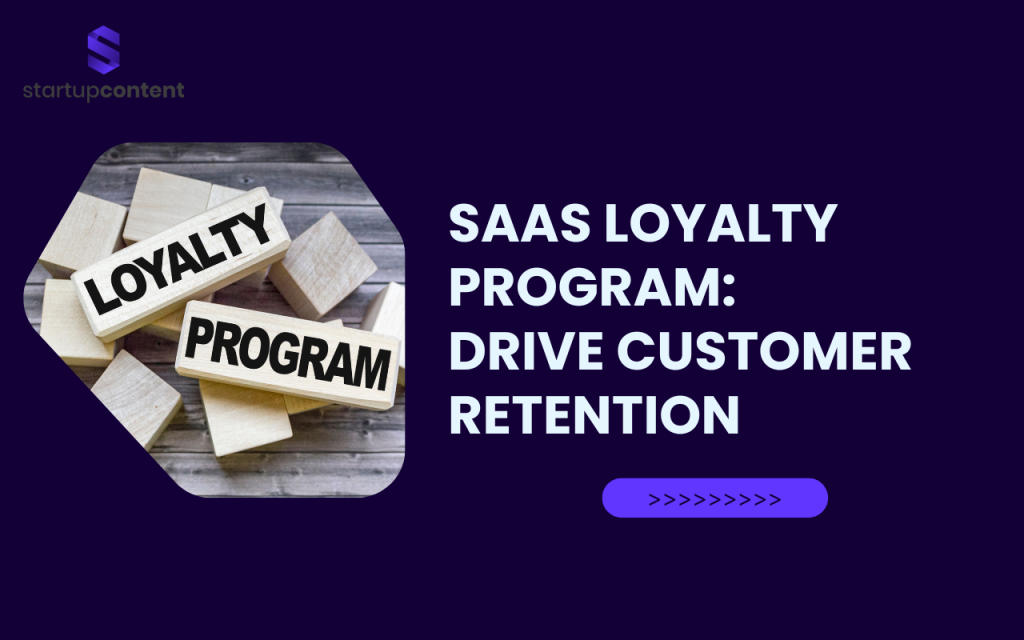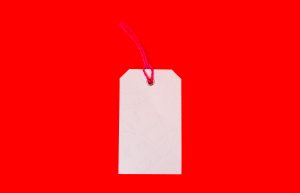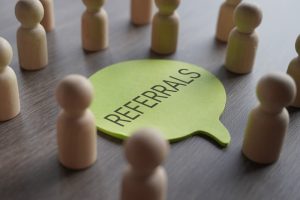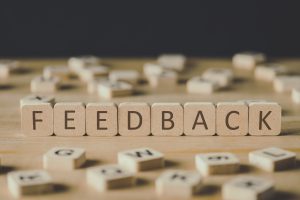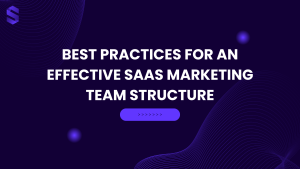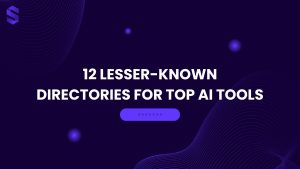Customer retention is vital in the SaaS world. Keeping users engaged and loyal is crucial for long-term success. SaaS loyalty programs are your secret weapon for boosting customer retention.
A whopping 40% of customers are more likely to buy again from brands that reward loyalty. It’s about building trust. In fact, 95% of customers say trusting a company is key to their loyalty.
Creating a resonant loyalty program means rewarding the right behaviors. Focus on regular product usage, feature adoption, and account upgrades. Also, encourage community engagement and referrals. These actions keep customers coming back and turn them into advocates.
Dropbox’s referral program led to 3900% growth in just 3 years. Whereby planted 1 million trees through their mission-driven loyalty initiative. These examples prove that well-crafted loyalty programs can boost SaaS success.
Want to improve customer engagement and retention? Create a SaaS loyalty program that sets your business apart. Use clever ai marketing tools to build lasting customer relationships quickly.
Key Takeaways
- SaaS loyalty programs significantly boost customer retention rates
- Trust is a crucial factor in building customer loyalty
- Effective programs reward key behaviors like product usage and referrals
- Successful loyalty initiatives can lead to exponential growth
- Personalized communication is essential for program success
- AI marketing tools can enhance loyalty program effectiveness
Understanding Customer Loyalty in SaaS
SaaS customer loyalty is about building strong bonds with subscribers. It makes customers grow with your product. Let’s explore why loyalty matters for your business.
Loyalty vs. Retention: What’s the Difference?
Customer retention keeps users subscribed. Loyalty creates emotional connections. Loyal customers become your biggest fans.
They’re more forgiving when issues arise. They often provide valuable feedback to improve your product.
Loyalty’s Impact on Business Growth
Loyal customers are invaluable for SaaS companies. They drive word-of-mouth referrals, reducing customer acquisition costs.
They’re likely to upgrade or buy more services. This boosts revenue without aggressive marketing.
Turn Customers into Lifelong Advocates! A strong loyalty program isn’t just about rewards—it’s about building meaningful relationships. Let us help you create engaging, conversion-driven content that keeps users coming back. Talk to us today and start boosting your SaaS retention!
Measuring Customer Loyalty
Tracking loyalty requires the right metrics. Here’s a quick look at some key indicators:
| Metric | Description | Why It Matters |
|---|---|---|
| Net Promoter Score (NPS) | Measures likelihood to recommend on a 0-10 scale | Identifies promoters, passives, and detractors |
| Customer Loyalty Index (CLI) | Combines NPS, repurchase, and upselling data | Provides a comprehensive loyalty score |
| Customer Lifetime Value (CLV) | Total revenue from an average customer | Higher CLV often indicates stronger loyalty |
| Negative Churn | Expansions vs. cancellations and downgrades | Shows growth from existing customers |
These metrics help gauge the strength of customer relationships. They can identify areas for improvement.
In SaaS, loyalty is crucial for sustainable growth. It’s not just nice to have—it’s essential.
The Business Case for SaaS Loyalty Program
SaaS loyalty programs boost company growth and strengthen customer bonds. They create a win-win scenario for businesses and clients. Let’s look at the main perks these programs offer.
Reducing Customer Acquisition Costs
Loyalty programs cut the cost of getting new customers. They use word-of-mouth marketing through referrals. This cuts down on pricey ad campaigns.
After a good brand experience, 68% of customers join loyalty programs. This shows how effective these programs can be.
Increasing Customer Lifetime Value
These programs help build long-term customer relationships. They open doors for upselling and cross-selling. This boosts the value each customer brings over time.
A study found that 56% of loyal customers spend more on brands they like. They do this even when cheaper options are available.
Driving Word-of-Mouth Marketing
Loyal customers become brand champions. They share good experiences and attract new clients. This natural growth works well because people trust recommendations from friends.
| Generation | Preference for Brands with Loyalty Programs |
|---|---|
| Gen X | 71% |
| Millennials | 70% |
| Baby Boomers | 63% |
| Gen Z | 62% |
SaaS loyalty tools offer advanced analytics for smart insights. This data-driven approach allows for custom experiences and product upgrades. Features like chatbots help create smooth customer support across all platforms.
Essential Components of Successful Loyalty Programs
Loyalty programs are game-changers for SaaS companies. They boost customer retention and drive growth. Let’s explore key components that make loyalty programs successful.
A clear value proposition is crucial. Your program should offer benefits customers truly want. These could include exclusive features or personalized support.
Seamless integration is essential. The program should feel natural within your product. Avoid clunky interfaces and confusing signup processes.
Customer engagement is vital. Create multiple touchpoints for users to interact and earn rewards. This keeps them coming back often.
Make rewards relevant and attainable. 66% of consumers adjust spending to maximize loyalty benefits. That’s a powerful incentive!
| Component | Impact |
|---|---|
| Clear Value Proposition | 81% more likely to continue business |
| Relevant Rewards | 66% adjust spending to maximize benefits |
| Engagement Opportunities | 75% more likely to make purchases |
| Personalization | 15-25% revenue boost from existing customers |
Personalization is key. Use data to tailor rewards and communications. This makes customers feel valued and appreciated.
Consider using conversational AI. Chatbots can provide instant support and answer program questions. They can even offer personalized recommendations.
A well-crafted loyalty program is a powerful growth tool. It can increase profits by 25% to 95% through better retention rates.
Types of SaaS Loyalty Programs
SaaS companies use different loyalty programs to keep customers and grow. Let’s look at the best ways to keep users engaged and loyal.
Points-Based Systems
Points-based rewards are popular in SaaS. Users earn points for actions like logging in or using features. They can trade points for perks, discounts, or special content.
This system gets users to engage often. It also makes them use the product more.
Tiered Reward Programs
Tiered rewards give better benefits as customers move up levels. Users unlock more valuable perks as they progress. This keeps customers longer and makes them use more features.
Mission-Driven Initiatives
Some SaaS companies link loyalty programs to causes users care about. This builds a bond beyond the product itself.
Users might earn points for charity donations. They could also join community projects.
Referral Programs
Referral marketing helps SaaS companies grow. Users get rewards for bringing in new customers. Rewards often include account credits or longer subscriptions.
This turns happy customers into brand fans.
| Loyalty Program Type | Key Benefit | Example |
|---|---|---|
| Points-Based | Increased engagement | Evernote’s points for feature usage |
| Tiered Rewards | Long-term retention | Salesforce’s Premier Success Plans |
| Mission-Driven | Emotional connection | Slack’s community initiatives |
| Referral Programs | User acquisition | Dropbox’s space bonus for referrals |
Pick a loyalty program that fits your SaaS product and users. A good program can boost customer value and keep users longer.
Leveraging AI in Loyalty Programs
AI marketing tools are changing loyalty programs in the SaaS industry. These technologies boost customer engagement and retention. They use smart, data-driven strategies to achieve this.
Predictive Analytics for Customer Behavior
Predictive analytics uses past data to forecast future actions. It helps businesses anticipate customer needs. This approach improves customer satisfaction and loyalty.
Personalization Through Machine Learning
Machine learning analyzes customer data to create personalized experiences. It spots patterns in customer behavior. This allows businesses to offer targeted rewards that match individual likes.
Chatbots for Program Support
AI-powered chatbots give instant, 24/7 support for loyalty program members. They answer questions and help with reward redemptions. Chatbots also offer personalized tips, making the user experience better.
| AI Feature | Benefit | Impact |
|---|---|---|
| Predictive Analytics | Anticipates customer needs | 79% of companies report cost reductions |
| Machine Learning | Personalizes rewards | 72% increase in customer trust |
| Chatbots | Provides 24/7 support | 50% reduction in reward redemption time |
SaaS companies can create better loyalty programs with these AI tools. These programs adjust to customer needs in real-time. This builds long-term relationships and helps businesses grow.
Building an Effective Onboarding Strategy
A good customer onboarding plan is vital for SaaS companies. It affects user activation and long-term loyalty. SaaS businesses can lose up to 75% of new users without effective onboarding.
Personalization is key to successful onboarding. Start with a welcome survey to gather user information. This helps tailor the experience to each customer’s needs.
HubSpot uses survey responses to create personalized onboarding experiences. This approach has greatly improved their user retention rates.
Interactive walkthroughs work better than long product tours. Guide users through key features step-by-step. Notion’s task-based product tour is a good example.
| Onboarding Element | Impact on User Activation | Example |
|---|---|---|
| Personalized Welcome Survey | Tailors experience, increases retention | HubSpot |
| Interactive Walkthroughs | Enhances engagement, quickens value realization | Notion |
| Educational Resources | Reduces user drop-off, improves adoption | Asana |
Onboarding doesn’t stop after initial setup. Use secondary onboarding to introduce advanced features over time. This ongoing process deepens product understanding and keeps users engaged.
Companies that invest in welcoming content after purchase see higher customer loyalty. In fact, they experience 85% more loyalty from customers.
Always improve your onboarding process using user feedback and behavior data. This approach will boost activation rates and long-term retention. It will help grow your SaaS business.
Creating Personalized Customer Experiences
Personalization is key in SaaS loyalty programs. It’s about making customers feel special. Let’s explore how to craft experiences that resonate with users.
Customized Rewards and Incentives
One-size-fits-all rewards are outdated. Today’s customers want personalized perks. Use behavioral analytics to understand your users’ preferences.
Tailor your rewards to match what they like. This approach makes your program more appealing and effective.
| User Behavior | Personalized Reward |
|---|---|
| Frequent feature usage | Early access to new features |
| High data usage | Extra storage space |
| Regular referrals | Exclusive training sessions |
Targeted Communication Strategies
Your messages should always hit the mark. Use data-driven insights to create personalized content. Send the right message at the right time.
Choose the best channel for each user. This boosts engagement and keeps your brand memorable.
Behavioral-Based Engagement
Pay attention to how users interact with your product. Use these insights to trigger specific actions or rewards.
This approach creates a more engaging experience. It also strengthens the bond between user and brand.
“64% of shoppers are willing to download an app to earn rewards.”
Create a user-friendly app that offers personalized rewards. Understand your customers and deliver value that matters to them.
This strategy will help you make the most of customer enthusiasm. Your loyalty program will thrive as a result.
Measuring Program Success
Evaluating your SaaS loyalty program is key for keeping customers and boosting ROI. Use loyalty metrics and customer analytics to gain insights. These tools help you make smart choices to improve your program.
Here are important indicators to measure program success:
- Customer Retention Rate (CRR): Tracks the percentage of customers you retain over time.
- Redemption Rate: Measures how often customers use their rewards.
- Customer Lifetime Value (CLV): Estimates the total revenue expected from a customer.
- Net Promoter Score (NPS): Gauges customer satisfaction and loyalty.
- Referral Rate: Indicates the percentage of new customers acquired through referrals.
This table shows the impact of successful loyalty programs:
| Metric | Impact |
|---|---|
| Revenue Increase | 15-25% annually from redeeming customers |
| Customer Retention | 5% increase can boost revenues by 25-95% |
| Referral Likelihood | 70% higher for program participants |
| Market Growth | 16.3% CAGR expected by 2026 |
Keep an eye on these loyalty metrics and measure ROI often. This helps you improve your program for long-term customer engagement. Successful programs change with customer needs and market trends.
This ensures value for both your business and customers. Stay flexible and responsive to keep your program strong.
Integration with Customer Support
Blending loyalty programs with customer support creates a seamless experience. This integration boosts satisfaction and drives long-term loyalty. Let’s explore how to make this happen.
Self-Service Resources
Empower customers with self-service options. Create a knowledge base with video tutorials and FAQs. This lets users solve issues quickly, enhancing their experience.
It also frees up your support team for complex queries. Self-service resources save time and improve customer satisfaction.
Support Team Training
Equip your support team with in-depth knowledge of your loyalty program. Train them to offer personalized solutions based on a customer’s status.
This personal touch can turn support interactions into loyalty-boosting moments. Well-trained staff can resolve issues and strengthen customer relationships.
Feedback Loop Implementation
Set up a feedback loop to improve your program and overall customer experience. Use surveys, analytics, and direct customer input for this purpose.
This data helps refine your loyalty program and support processes. Continuous improvement based on feedback leads to better customer satisfaction.
| Integration Feature | Benefit |
|---|---|
| AI-powered chatbots | Instant support for common queries |
| Voice assistants | Hands-free program information access |
| Loyalty-linked support | Reinforces value across all touchpoints |
Integrating customer support with your loyalty program creates a powerful retention tool. This approach solves problems and reinforces program value at every interaction.
Gamification Strategies for Engagement
Gamification can transform your SaaS customer retention. It adds game-like elements to your platform. This keeps customers coming back for more.
Progress bars, badges, and leaderboards are simple but effective additions. They tap into our love for achievement and competition. Seeing a progress bar fill up feels satisfying.
Gamification isn’t just fun; it drives real results. Here are some impressive stats:
| Gamification Impact | Percentage Increase |
|---|---|
| Customer Engagement | 47% |
| Brand Loyalty | 22% |
| User Engagement in SaaS | 40% |
| Customer Lifetime Value | 30% |
Want to improve your gamification? Try these strategies:
- Create challenges tied to product usage goals
- Offer virtual or real-world rewards for hitting milestones
- Use storytelling to build a narrative around program participation
Keep your gamification meaningful and avoid superficial tactics. Add real value for customers. This approach leads to higher engagement and stronger loyalty.
Done right, gamification benefits both you and your users. It’s a powerful tool for better retention.
Data Analytics and Program Optimization
Data analytics boosts SaaS loyalty programs. It helps businesses make smart choices to improve their loyalty efforts. Companies can use insights from customer actions and program results.
Key Performance Indicators
Tracking the right KPIs is vital for program success. Important metrics include:
- Customer retention rate
- Average order value
- Program participation rate
- Redemption rate
Customer Behavior Analysis
Understanding customer behavior helps tailor your loyalty program. Look at patterns in:
- Purchase frequency
- Reward preferences
- Engagement with program features
This knowledge allows for personal experiences that boost customer loyalty.
ROI Measurement
Measuring ROI proves your loyalty program’s worth. Think about these factors:
- Customer Lifetime Value (CLV)
- Reduced acquisition costs
- Increased customer spending
KPMG reports that 85% of company growth comes from loyal customers. This shows how important retention strategies are.
SaaS companies can always improve their loyalty programs. They use data and predictive analytics. This ensures value for customers and the business.
Common Pitfalls to Avoid
Loyalty programs can be tricky for SaaS companies. Many fall into traps that hurt their success. Let’s look at mistakes to avoid for better customer experience.
Keep your program simple and easy to understand. A complex system may lose potential participants. 37.5% of consumers join loyalty programs to earn rewards.
Offer relevant and valuable rewards. 54.7% of people join programs to save money. Make sure your incentives match customer needs. Personalization matters – 25% of consumers want more customized programs.
| Pitfall | Impact | Solution |
|---|---|---|
| Overcomplicated structure | Lower participation rates | Simplify program rules and processes |
| Irrelevant rewards | Decreased motivation | Offer meaningful, personalized incentives |
| Lack of communication | Reduced engagement | Regular updates on benefits and changes |
| Neglecting data privacy | Loss of trust | Transparent data usage policies |
Don’t forget to communicate regularly with customers. Keep them informed about program benefits and updates. This can boost engagement and spread positive word-of-mouth.
78% of loyal customers recommend brands they like. Pay attention to data privacy concerns. Be clear about how you use customer information.
Trust is key in building long-term loyalty. It helps avoid potential program pitfalls. Make sure your loyalty program is transparent and valuable.
Conclusion
SaaS loyalty programs boost customer retention and business growth. They can increase profits by 25% to 95% with just a 5% rise in retention rates. These programs are essential for SaaS companies, with 91% of consumers preferring personalized experiences.
Successful programs mix monetary and experiential rewards, favored by 54% of consumers. Data analytics provide insights into user preferences and guide program optimization. Track metrics like participation rates and Customer Lifetime Value impact to measure success.
The loyalty management market is now worth over $10 billion. Companies like Capillary Technologies offer platforms reaching billions of customers. Use AI and personalization to turn satisfied users into brand advocates.
This approach drives sustainable success in the competitive SaaS world. By focusing on customer loyalty, you can stand out and grow your business effectively.
A great loyalty program needs great content. From onboarding emails to referral campaigns, we craft high-converting content that strengthens customer relationships. Let’s create a strategy that turns your users into loyal brand advocates—get in touch now!
FAQ
What is a SaaS loyalty program?
A SaaS loyalty program nurtures customer relationships and boosts retention. It rewards behaviors like product usage, upgrades, and referrals. This creates a stronger bond between customers and the brand.
How does a loyalty program differ from simple customer retention?
Loyalty programs create emotional bonds, unlike simple customer retention. Loyal customers are more patient with issues and provide valuable feedback. They often become brand advocates, going beyond just staying subscribed.
What are the key benefits of implementing a SaaS loyalty program?
Benefits include increased Customer Lifetime Value and reduced churn. These programs also lower acquisition costs and enhance customer insights. They offer competitive differentiation and improve product adoption.
Loyalty programs create stronger brand advocacy. They build a win-win scenario that strengthens customer-company relationships.
What types of SaaS loyalty programs are there?
Common types are points-based systems and tiered reward programs. Mission-driven initiatives and referral programs are also popular. Each type can be tailored to fit specific business goals.
How can AI enhance loyalty programs?
AI uses predictive analytics and personalization to enhance loyalty programs. It can anticipate customer behavior and enable hyper-personalized rewards. AI-powered chatbots provide instant support, creating more engaging programs.
Why is personalization important in loyalty programs?
Personalization offers rewards that match individual preferences and usage patterns. It improves program effectiveness and strengthens emotional connections. This creates a more engaging experience for each customer.
How can I measure the success of my loyalty program?
Key metrics include participation rate and redemption rate. Track changes in Customer Lifetime Value and Net Promoter Score. Monitor retention rates, churn reduction, and referral rates.
Regular analysis of these metrics helps optimize program performance. It also demonstrates the return on investment.
How can gamification enhance loyalty program engagement?
Gamification taps into intrinsic motivations to boost engagement. Use point systems, badges, and leaderboards to create a sense of achievement. Add progress bars and challenges to make participation more enjoyable.
What are some common pitfalls to avoid in loyalty programs?
Avoid overcomplicated program structures and irrelevant rewards. Don’t neglect regular communication or treat all customers the same. Test thoroughly before launch and focus on more than just transactions.
Be mindful of data privacy concerns. Regularly review and update the program to maintain relevance.
How does a loyalty program integrate with customer support?
Develop comprehensive self-service resources and train support teams on program details. Implement a feedback loop for continuous improvement. Use AI-powered chatbots for instant support.
Ensure support interactions contribute to loyalty program progress. This reinforces the value of customer engagement across all touchpoints.

